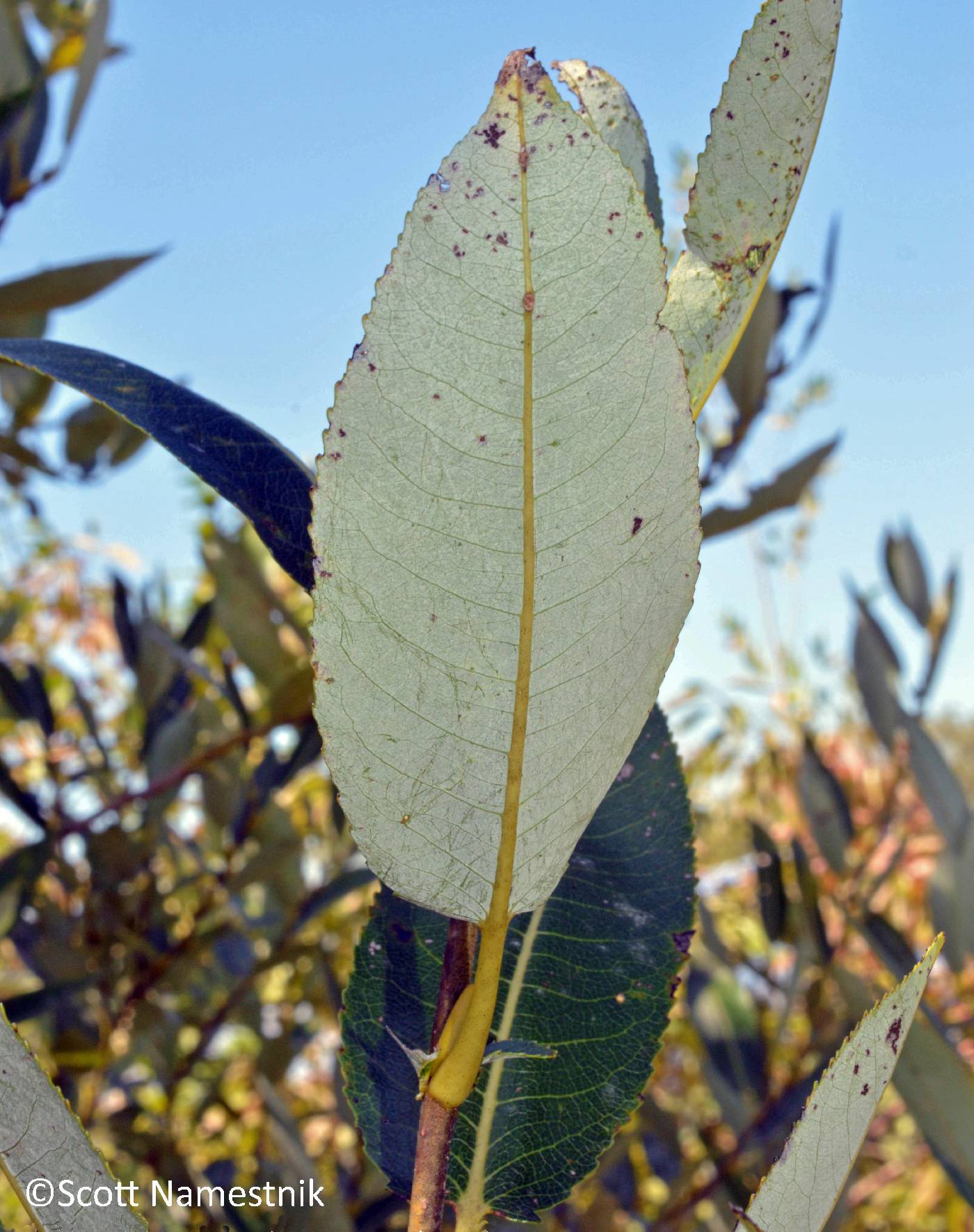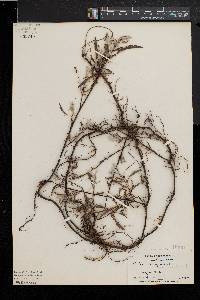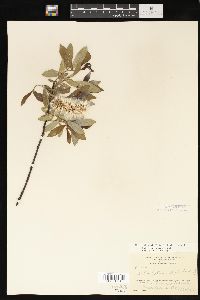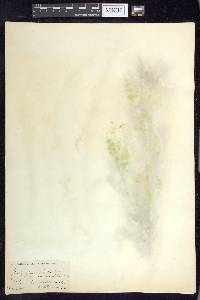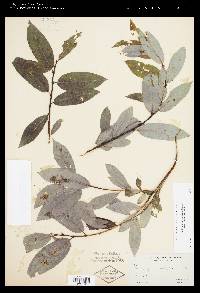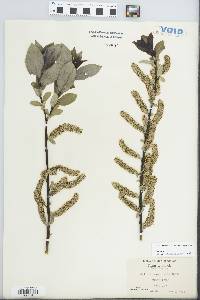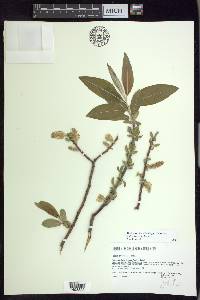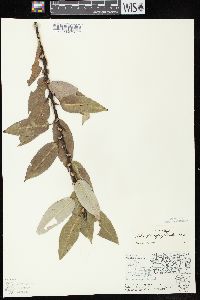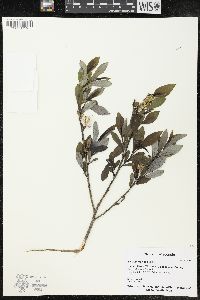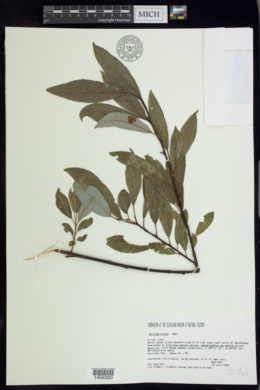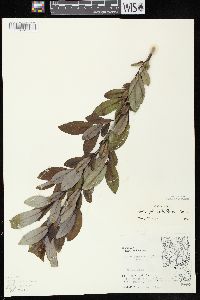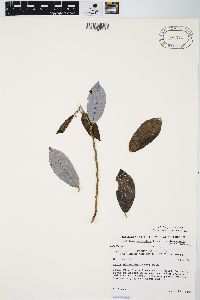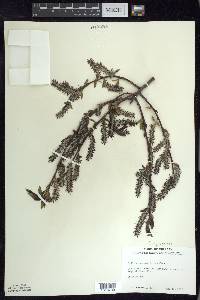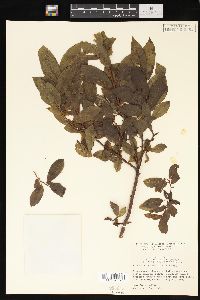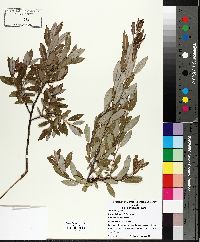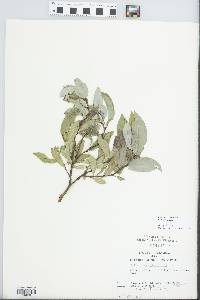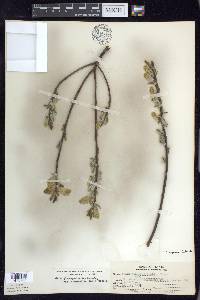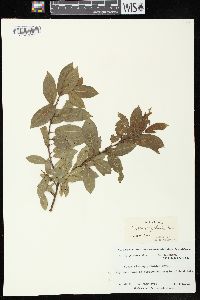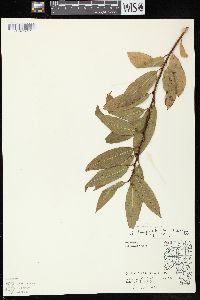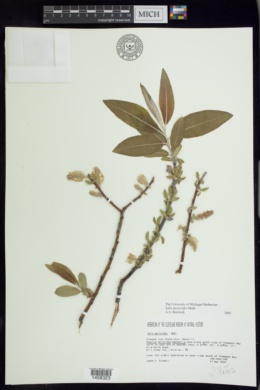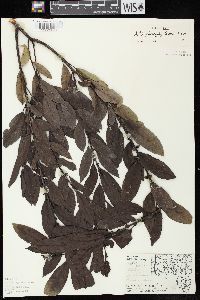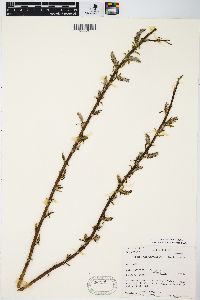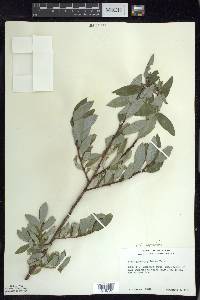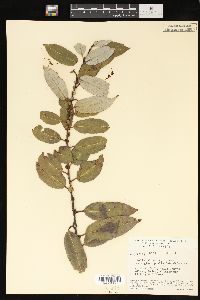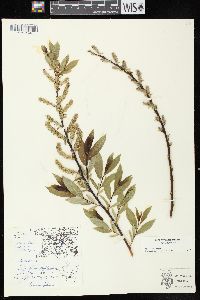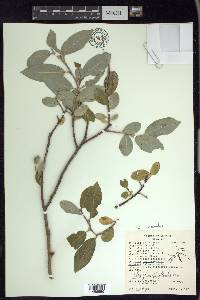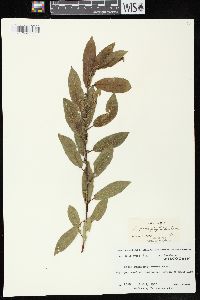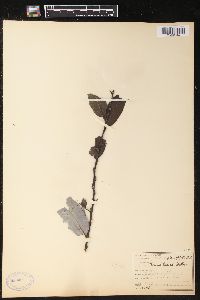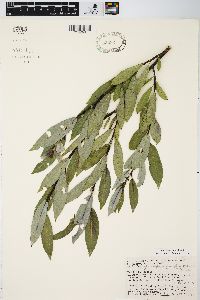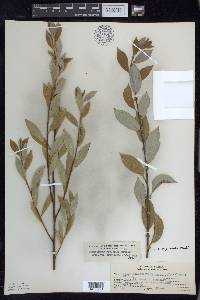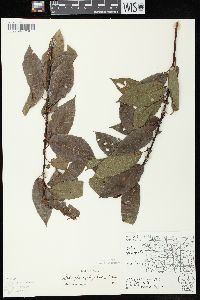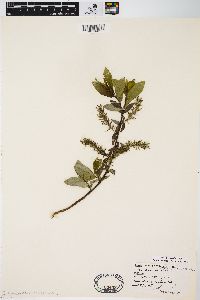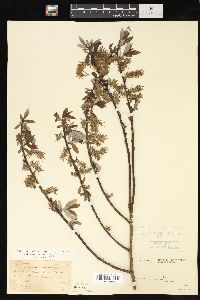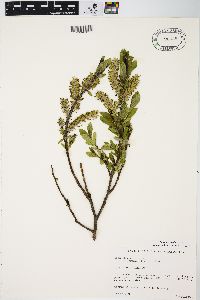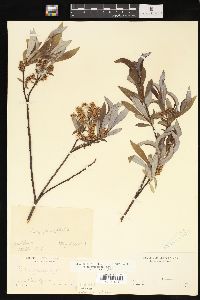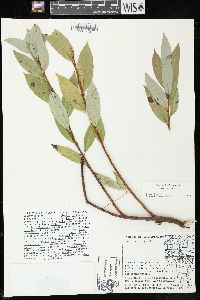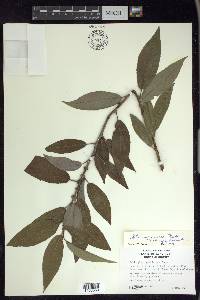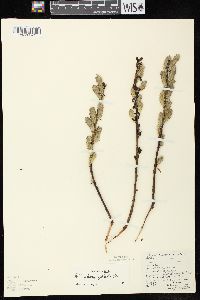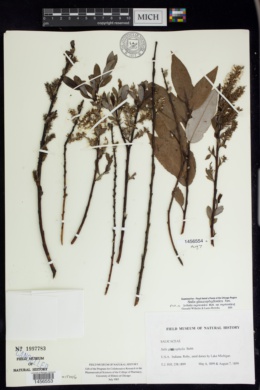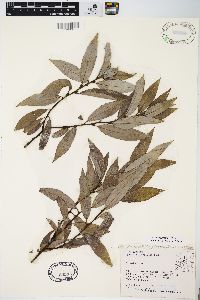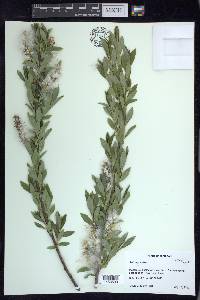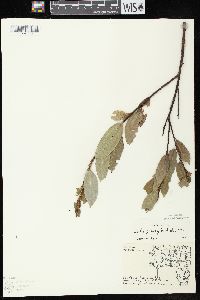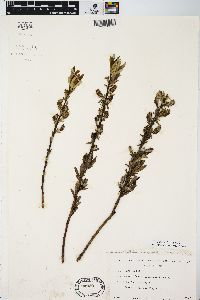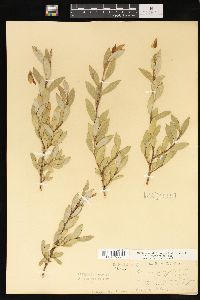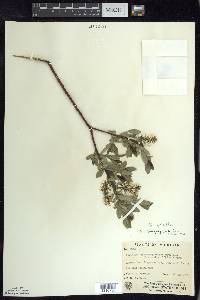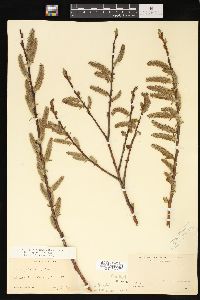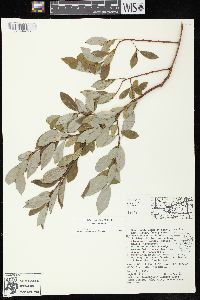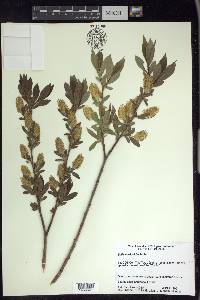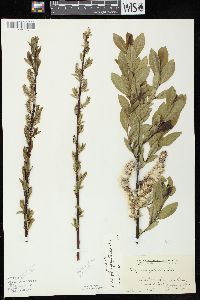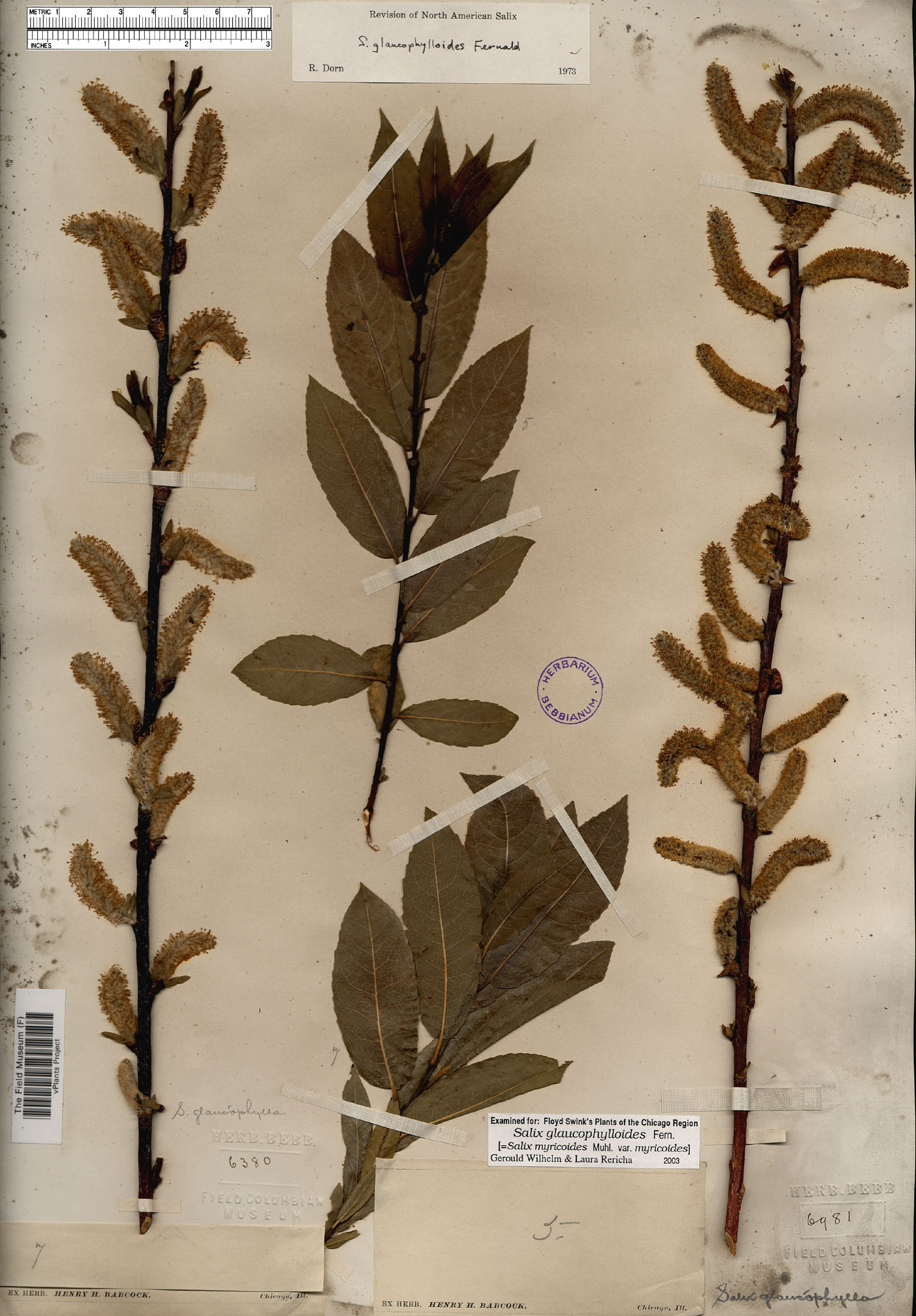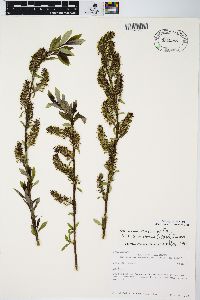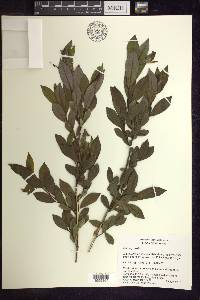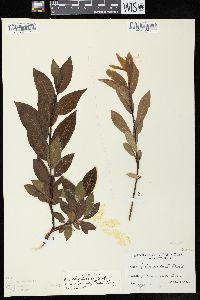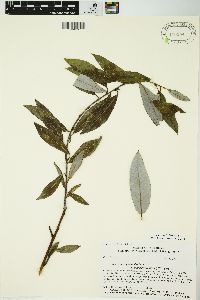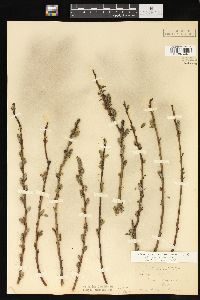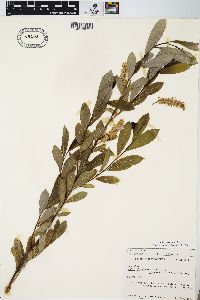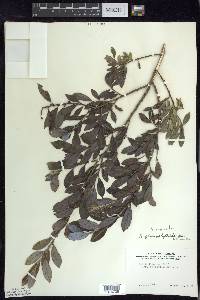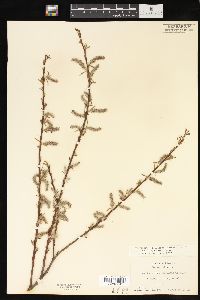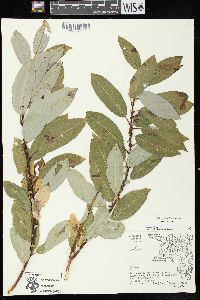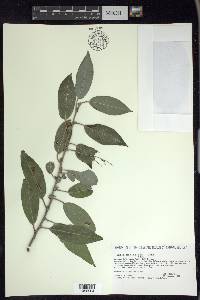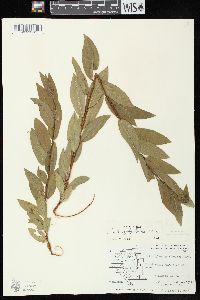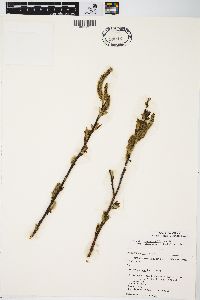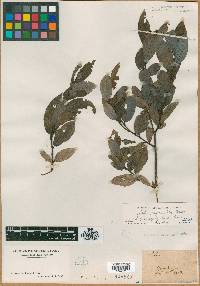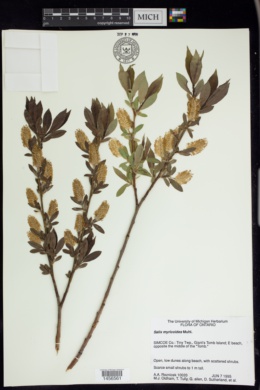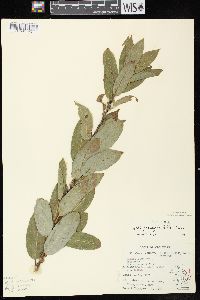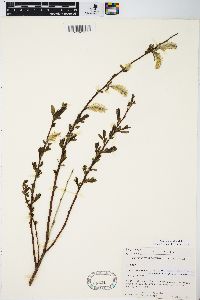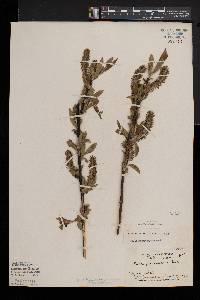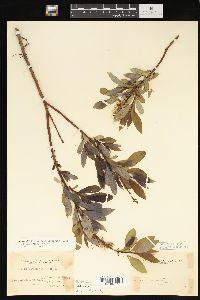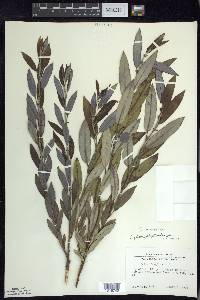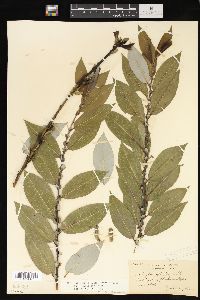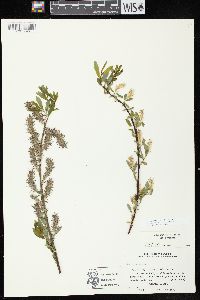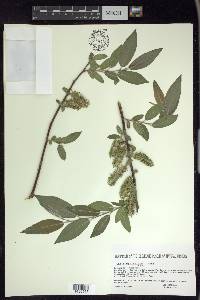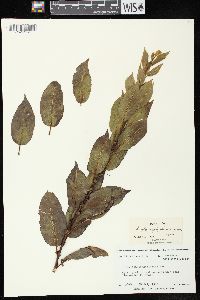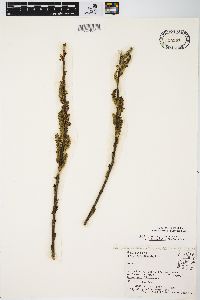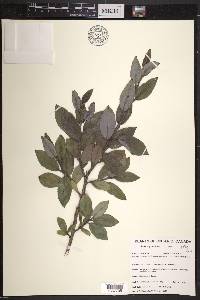Salix myricoides
|
|
|
|
Family: Salicaceae
Bayberry Willow
|
Plants 0.3-5 m, (sometimes forming clones by stem fragmentation or layering). Stems: branches (sometimes highly brittle at base), red-brown or yellow-brown, not or weakly glaucous, (slightly or highly glossy), glabrous or villous; branchlets red-brown or yellow-brown, glabrous or sparsely to very densely villous, (buds caprea-type, inner membranaceous bud-scale layer free and separating or not). Leaves: stipules rudimentary or foliaceous on early ones, foliaceous on late ones, apex acute or acuminate; petiole shallowly grooved, or convex to flat adaxially, 3.5-7.3-13 mm, (sometimes with 2 spherical glands distally), villous, tomentose, pilose, or pubescent adaxially; largest medial blade narrowly oblong, narrowly elliptic, elliptic, or oblanceolate, 35-61.3-110 × 11-16-46 mm, 2-2.7-5.2 times as long as wide, base convex, rounded, subcordate, or cuneate, margins flat or slightly revolute, (thickened and raised), crenulate or serrulate, apex acuminate, acute, or convex, abaxial surface usually very thickly glaucous, glabrous or pilose, midribs pubescent to tomentose, hairs (white, often also ferruginous), curved, wavy, or straight, adaxial slightly glossy, glabrous or pilose, midribs sparsely pubescent (hairs white, sometimes also ferruginous); proximal blade margins entire or serrulate; juvenile blade translucent, reddish or yellowish green, glabrous or sparsely pubescent abaxially, midribs often densely hairy, hairs white, sometimes also ferruginous. Catkins: staminate flowering before leaves emerge, pistillate as leaves emerge; staminate stout or slender, 23.5-35.6-51 × 9-12.7-22 mm, flowering branchlet 1-3.9-10 mm; pistillate loosely flowered, stout or slender, 19-42-62 (-85 in fruit) × 8-13-18 mm, flowering branchlet 1.5-5.9-13 mm; floral bract brown or bicolor, 1.2-1.8-3 mm, apex rounded or acute, sometimes toothed, abaxially hairy, hairs straight or wavy. Staminate flowers: adaxial nectary narrowly oblong, oblong, square, or ovate, 0.44-0.48-1.4 mm; filaments distinct, glabrous; anthers yellow, (ellipsoid or globose), 0.52-0.69-0.76 mm. Pistillate flowers: adaxial nectary oblong, narrowly oblong, square, or flask-shaped, 0.56-0.8-1.4 mm, shorter than stipe; stipe 0.96-1.7-3.4 mm; ovary pyriform, glabrous, beak slightly bulged below styles; ovules 12-14 per ovary; styles (sometimes distinct), 0.3-0.8-1.3 mm; stigmas flat, abaxially non-papillate with rounded or pointed tip, or slenderly cylindrical, 0.24 Flowering early Apr-early Jul. Stream and lake shores, gravel bars, subalpine conifer forests, alkaline fens, sea cliffs, dry limestone talus, swamps, tidal meadows, sand dunes; 0-1100 m; N.B., Nfld. and Labr. (Nfld.), Ont., Que.; Ill., Ind., Maine, Mich., Ohio, Pa., Wis. Plants with densely villous branchlets and branches have been named var. albovestita. Branchlet indumentum varies widely in the species and seems to be continuous, with both villous and glabrous variants sometimes occurring in the same area. This characteristic is more common in populations on the shores of the Great Lakes and on the western coast of James Bay, but even these populations are variable. Reports of Salix myricoides from Akimiski Island, Nunavut, were based on misidentified S. planifolia. See 68. S. eriocephala for differences. Hybrids: Salix myricoides forms natural hybrids with S. bebbiana, S. discolor, and S. glauca var. cordifolia. Hybrids with S. eriocephala have been reported (M. L. Fernald 1950) but no convincing specimens have been seen. Inasmuch as S. eriocephala and S. myricoides are very similar, hybrids between the two would be very difficult to identify.
Shrub 1-4 m; twigs yellowish to dark brown, hairy when young; stipules semi-ovate, 5-10 mm; petioles 5-12 mm; lvs lanceolate or lance-ovate to ovate-oval or obovate-oval, 4-9(-12) נ1.5-4.5(-6) cm, thickish, acute to short-acuminate, glandularly crenate-serrate, mostly rounded or cordate at base, dark green above, strongly glaucous beneath, sometimes sparsely hairy when young; catkins with or shortly before the lvs, 2-8 cm, on leafy peduncles 0.5-1.5 cm; scales 1.5-2 mm, brownish-black, long-villous; stamens 2; frs narrowly lanceolate, 5-8 mm, glabrous; pedicels 1-3 mm; style
0.7-1.5 mm. Sandy shores, calcareous slopes, and sometimes swamps; Nf. and e. Que. to n. Me. and the Great Lakes region, s. to Ill. and Wis., and n. to Hudson Bay. (S. glaucophylla Bebb, not Besser; S. glaucophylloides) Plants with more hairy lvs and twigs have been called var. albovestita (C. R. Ball) Dorn. Depauperate plants in sterile sand chiefly along the Great Lakes, to 2 m, with more coriaceous and veiny lvs 2.5-5 נ0.5-2 cm, may constitute another var., but the proper combination (using the epithet brevifolia) has not yet been made. Gleason, Henry A. & Cronquist, Arthur J. 1991. Manual of vascular plants of northeastern United States and adjacent Canada. lxxv + 910 pp. ©The New York Botanical Garden. All rights reserved. Used by permission. From Flora of Indiana (1940) by Charles C. Deam Very local except along the sides of the dune facing Lake Michigan where it is more or less frequent. Away from the lake it is found in bogs and swamps. The variety brevifolia Bebb, which has been reported by Peattie and by Pepoon, is a shortleaf form which I do not regard as having any taxonomic standing. …… Indiana Coefficient of Conservatism: C = 9 Wetland Indicator Status: FACW |

